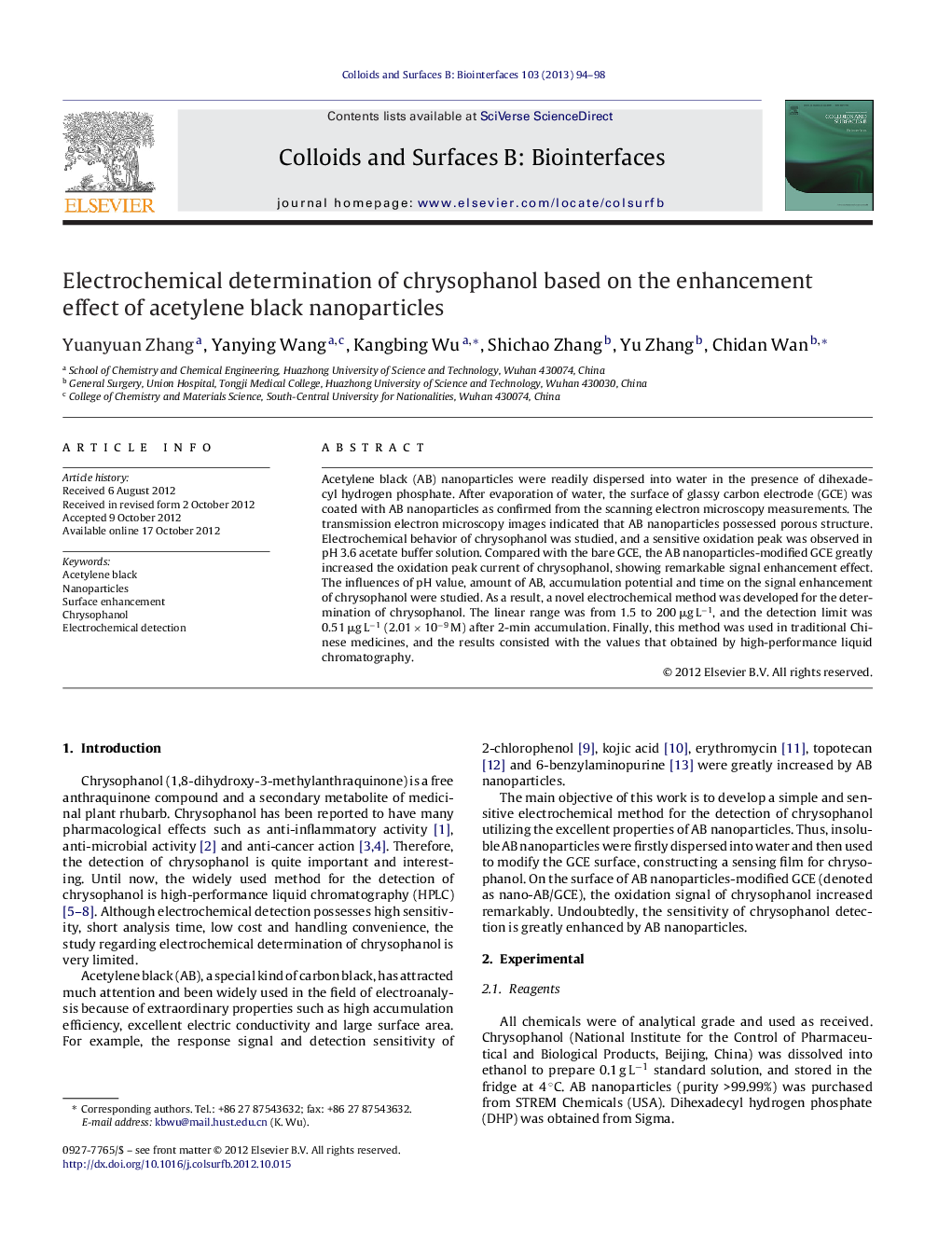| Article ID | Journal | Published Year | Pages | File Type |
|---|---|---|---|---|
| 600334 | Colloids and Surfaces B: Biointerfaces | 2013 | 5 Pages |
Acetylene black (AB) nanoparticles were readily dispersed into water in the presence of dihexadecyl hydrogen phosphate. After evaporation of water, the surface of glassy carbon electrode (GCE) was coated with AB nanoparticles as confirmed from the scanning electron microscopy measurements. The transmission electron microscopy images indicated that AB nanoparticles possessed porous structure. Electrochemical behavior of chrysophanol was studied, and a sensitive oxidation peak was observed in pH 3.6 acetate buffer solution. Compared with the bare GCE, the AB nanoparticles-modified GCE greatly increased the oxidation peak current of chrysophanol, showing remarkable signal enhancement effect. The influences of pH value, amount of AB, accumulation potential and time on the signal enhancement of chrysophanol were studied. As a result, a novel electrochemical method was developed for the determination of chrysophanol. The linear range was from 1.5 to 200 μg L−1, and the detection limit was 0.51 μg L−1 (2.01 × 10−9 M) after 2-min accumulation. Finally, this method was used in traditional Chinese medicines, and the results consisted with the values that obtained by high-performance liquid chromatography.
Graphical abstractFigure optionsDownload full-size imageDownload as PowerPoint slideHighlights► Enhanced oxidation of chrysophanol on AB nanoparticles surface was firstly studied. ► AB nanoparticles greatly increased the oxidation signal of chrysophanol. ► A sensitive, rapid and simple electrochemical sensor was developed for chrysophanol. ► It was used in real sample analysis, and the accuracy was tested using HPLC.
